 Teeth are an important part of the human body. We need them to chew our food, which enables us to survive, and if we take care of them, they can also give us a beautiful smile. But did you know that our teeth also affect how we talk? And if we don’t take care of them our overall health suffers? Teeth play a major role in our lives outside of just eating, which is why it is important that we take care of them, and taking care of them starts with being educated on what makes up the teeth in our mouths.
Teeth are an important part of the human body. We need them to chew our food, which enables us to survive, and if we take care of them, they can also give us a beautiful smile. But did you know that our teeth also affect how we talk? And if we don’t take care of them our overall health suffers? Teeth play a major role in our lives outside of just eating, which is why it is important that we take care of them, and taking care of them starts with being educated on what makes up the teeth in our mouths.
Stages of Teeth
Natal Teeth
One in every 2000-3000 births, Natal teeth are present when the baby comes to term. The teeth, usually appearing in the lower gum, are also called fetal teeth. Natal teeth tend no roots, or weak roots, so they often fall out fairly quickly. Doctors usually remove them so that they do not interfere with natural nursing, or risk injuring the baby’s soft lips.
Baby Teeth
We, humans, have two sets of teeth during our lives. Our baby teeth — called our primary teeth — develop in infancy. Usually there are 20 of them, which are buried beneath our gums at birth. They should erupt entirely by our third birthday, and can begin to appear as early as when we are six months old. They start erupting in the front and center of the mouth first, on the top and the bottom. After that they spread out sideways, filling the mouth towards the back, with the molars coming in last.
An important function of baby teeth, outside of helping children to chew, is to prepare the jaw and the gums for the arrival of the permanent, adult, teeth. The baby teeth push the jaw and gums outward, making more space for the developing adult teeth to have room to erupt as the baby teeth fall out. This eruption begins to happen when the child is about six years old.
Adult Teeth
Permanent teeth — also called adult teeth — number 32 in most people, 16 on the top and 16 on the bottom. As we said, they begin coming in around six years of age, and it takes until about 12 years old until they fully erupt. Adult teeth are larger and stronger than baby teeth and are the last set of teeth humans will have, so it is very important to take care of them as you get older. Proper brushing, flossing, and regular dental check-ups can help ensure that your teeth remain healthy for the rest of your life.
Types of Teeth
There are four different types of teeth in humans: incisors, canines, premolars and molars. In each jawbone, there is a specific number of each type of tooth. In the front and center are four incisors, on each side of the incisors is one canine. Next to each canine are two premolars, and next to those are three molars. The two back molars on each jaw, also known as the wisdom teeth, may not erupt. They are often impacted — sometimes sideways — into the jaw which often requires surgery to remove.
Incisors
The incisors support the lips and help you articulate the words you speak. They are thin and sharp and cut the food you eat into smaller pieces so it can be chewed by the larger, flatter molars. We have four incisors.
Canines
Canines help guide the teeth so that they slide neatly together. They also pierce and cut the food for easier chewing. Dentists call the pointy canines the cuspids. We have four canines.
Premolars
Also called bicuspids, they, along with the molars, are flat on the top and are used for chewing. We have eight premolars.
Molars
The molars are the largest, flattest teeth we’ve got, and do the bulk of the masticating, or chewing. The upper molars have three roots, the lower molars have two. The molars also help to support the height of the face. We have 12 molars.
Supernumerary Teeth
In some cases a person may develop more than 32 teeth, these are known as supernumerary teeth. Most often this is an extra incisor, in between two other incisors. This incisor is known as a mesioden. Another common supernumerary tooth is the paramolar, an additional molar. Extra canine teeth have also been known to occur. These extra teeth can cause issues with spacing within the mouth and are often removed by your dentist.
Anatomy of a Tooth - What Makes up Your Teeth
The Crown and the Root
A tooth is comprised of two major parts: the crown and the root. The crown of a tooth is the white part that you can see, the part that is above the gum line. It is only about 1/3 of the whole tooth. The root is embedded in the gums and the jawbone. It is about 2/3 of the tooth and surrounds the nerve endings, or pulp, of the tooth.
Enamel
The enamel is the shiny white coating on the outside of the tooth. It is also the part that becomes dull and yellow if you don’t brush properly, or eat, drink or smoke things that can stain the enamel. The enamel protects the tooth from wear. Tooth enamel is the hardest substance in the body.
Dentin
Dentin is a yellow, bony material that supports the tooth’s enamel. It also carries some of the nerve fibers that ache when something is wrong with your tooth. Dentin is stronger than bone, but softer than enamel.
Cementum
Cementum is the tooth root’s surface layer. It is a dynamic periodontium entity, meaning that it is not a passive chemical like enamel. It attaches to the bone and the gingiva. Gingivitis can inflame it. Cementum helps repair and regenerate the teeth.
Dental Pulp
In the tooth's center is the pulp, which contains blood, nerves and lymph vessels. The nerves and lymphatic vessels send electrochemical signals to the nervous system and the brain. The blood feeds the tooth, keeping it alive.
Keep Your Teeth Healthy
Once our adult teeth grow in that's it, there's no going back. If your adult teeth fall out or become diseased, you will have to resort to dental implants or dentures for the rest of your life. Regular brushing, flossing, and check-ups by your dentist are great ways to help prevent tooth decay and other oral health issues. Cutting down on sugary drinks and smoking can also help the longevity of your teeth.
If you're in the Chicagoland area and looking for more information regarding the health of your teeth, or you wish to setup an appointment to see one of our incredible Dentists, contact us today!
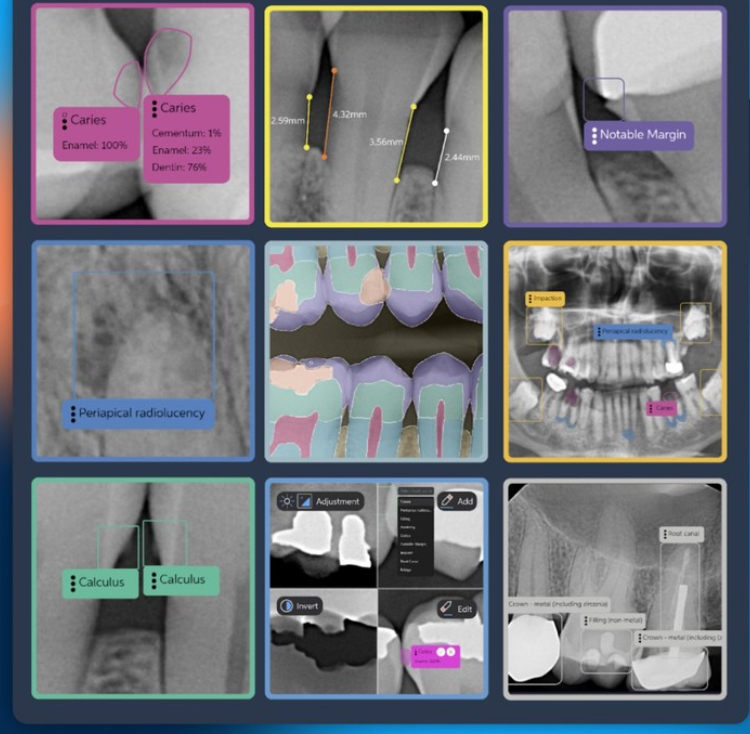

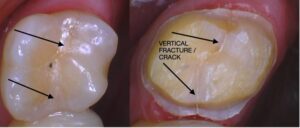
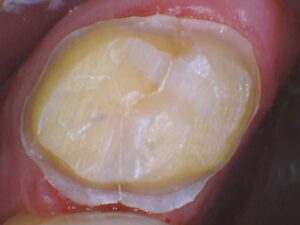
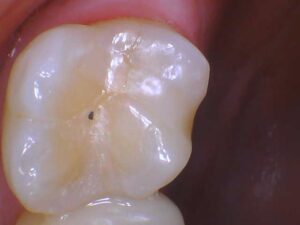
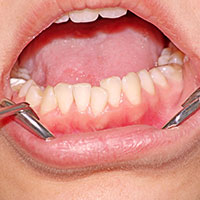 If you think that your teeth have become more crooked over the years, you’re probably not imagining things. Many people with crooked teeth have had their condition progress as they have grown older.
If you think that your teeth have become more crooked over the years, you’re probably not imagining things. Many people with crooked teeth have had their condition progress as they have grown older. Are your teeth proportionately-sized when you smile - or do they appear smaller or square? If so, you might have a condition known as “short teeth.” It can be caused by a wide variety of factors such as: excessive wear and tear, genetics, or another condition known as a “gummy smile.”
Are your teeth proportionately-sized when you smile - or do they appear smaller or square? If so, you might have a condition known as “short teeth.” It can be caused by a wide variety of factors such as: excessive wear and tear, genetics, or another condition known as a “gummy smile.”
 Taking care of your teeth is one of the most important things you can do. It prevents tooth decay and other serious issues that can cause tooth loss or lead to other health issues. Most people tend to think that brushing and flossing are the only two ways to take care of their teeth. The reality is that they’re missing a critical 3rd component: watching what you eat.
Taking care of your teeth is one of the most important things you can do. It prevents tooth decay and other serious issues that can cause tooth loss or lead to other health issues. Most people tend to think that brushing and flossing are the only two ways to take care of their teeth. The reality is that they’re missing a critical 3rd component: watching what you eat. Your teeth and your smile are one of the first things that people notice about you. For people who have gummy smiles, first encounters can make the, feel self-conscious or downright embarrassed to smile. In this age of selfies, Instagram, and Facebook, those people who have gummy smiles tend to avoid taking photos altogether or find themselves having to feign a smile – which can often lead to an insincere look on their face.
Your teeth and your smile are one of the first things that people notice about you. For people who have gummy smiles, first encounters can make the, feel self-conscious or downright embarrassed to smile. In this age of selfies, Instagram, and Facebook, those people who have gummy smiles tend to avoid taking photos altogether or find themselves having to feign a smile – which can often lead to an insincere look on their face. Think back to when you lost your first tooth as a child. If you were like most kids, you were super excited that the Tooth Fairy would leave you a few dollars under your pillow. The years flew by and now you find yourself asking the same questions that your parents probably did.
Think back to when you lost your first tooth as a child. If you were like most kids, you were super excited that the Tooth Fairy would leave you a few dollars under your pillow. The years flew by and now you find yourself asking the same questions that your parents probably did. A “gummy smile” is when a person’s upper gums are very prominently shown when they smile. It is usually characterized by the upper teeth appearing too short, or the upper gums appearing to be too long. This harmless condition is highly subjective – and entirely dependent upon what the person feels is aesthetically pleasing.
A “gummy smile” is when a person’s upper gums are very prominently shown when they smile. It is usually characterized by the upper teeth appearing too short, or the upper gums appearing to be too long. This harmless condition is highly subjective – and entirely dependent upon what the person feels is aesthetically pleasing.
 Cracked or chipped teeth often happen when you least expect it. Whether it’s due to falling, being hit in the face, or biting down on something hard, some people tend to worry that a chipped tooth can’t be fixed. Thankfully, modern dentistry has come a long way over the years and there are several ways a dentist can repair a chipped or broken tooth.
Cracked or chipped teeth often happen when you least expect it. Whether it’s due to falling, being hit in the face, or biting down on something hard, some people tend to worry that a chipped tooth can’t be fixed. Thankfully, modern dentistry has come a long way over the years and there are several ways a dentist can repair a chipped or broken tooth. Did you know that toothpaste has a secret measurement that’s usually not listed anywhere on the label or product?
Did you know that toothpaste has a secret measurement that’s usually not listed anywhere on the label or product? With summer in full swing here in Chicago, the weather is heating up and the crowds are heading outdoors. There’s a lot going on in August, from lazy beach days to outdoor concerts, and food. Lots and lots of food. There’s only 3 more weeks left in August, and the food/street festival season is only getting warmed up. Here are our favorite picks for food/street festivals for the remainder of 2017:
With summer in full swing here in Chicago, the weather is heating up and the crowds are heading outdoors. There’s a lot going on in August, from lazy beach days to outdoor concerts, and food. Lots and lots of food. There’s only 3 more weeks left in August, and the food/street festival season is only getting warmed up. Here are our favorite picks for food/street festivals for the remainder of 2017: It seems that no matter how much information we have about how food and beverages impact our health, we continue to ignore the information and make up our own minds about what we choose to believe based on how it fits into our lifestyles. Take soda, for example. There is a lot of research that points to the fact that drinking soda on a regular basis, or even once in a while, can have a lasting impact on your overall health, not to mention the impact it can have on your teeth and oral health, but people continue to ignore these warnings.
It seems that no matter how much information we have about how food and beverages impact our health, we continue to ignore the information and make up our own minds about what we choose to believe based on how it fits into our lifestyles. Take soda, for example. There is a lot of research that points to the fact that drinking soda on a regular basis, or even once in a while, can have a lasting impact on your overall health, not to mention the impact it can have on your teeth and oral health, but people continue to ignore these warnings. When we think of our health and wellness, we often think about our diets, how much we exercise, what kinds of diseases we have or could get. We don’t give as much thought to our oral health, however, and the state of our oral health (our mouth and teeth) can have a big impact on our overall health. Often times, the reason for poor oral health is because we neglect our teeth. Not the kind of neglect that means skipping brushing and dentist visits, but the kind of neglect that we put our teeth through every day without even realizing it. Here are seven bad teeth habits you need to break right now. Your oral health depends on it!
When we think of our health and wellness, we often think about our diets, how much we exercise, what kinds of diseases we have or could get. We don’t give as much thought to our oral health, however, and the state of our oral health (our mouth and teeth) can have a big impact on our overall health. Often times, the reason for poor oral health is because we neglect our teeth. Not the kind of neglect that means skipping brushing and dentist visits, but the kind of neglect that we put our teeth through every day without even realizing it. Here are seven bad teeth habits you need to break right now. Your oral health depends on it! Teeth are an important part of the human body. We need them to chew our food, which enables us to survive, and if we take care of them, they can also give us a beautiful smile. But did you know that our teeth also affect how we talk? And if we don’t take care of them our overall health suffers? Teeth play a major role in our lives outside of just eating, which is why it is important that we take care of them, and taking care of them starts with being educated on what makes up the teeth in our mouths.
Teeth are an important part of the human body. We need them to chew our food, which enables us to survive, and if we take care of them, they can also give us a beautiful smile. But did you know that our teeth also affect how we talk? And if we don’t take care of them our overall health suffers? Teeth play a major role in our lives outside of just eating, which is why it is important that we take care of them, and taking care of them starts with being educated on what makes up the teeth in our mouths. Did you know that the top drinking adults consume up to 73.85 drinks every week on average? To put this into perspective, that is equivalent to four and a half 750 ml bottles of Jack Daniels weekly, or 10 drinks every day.
Did you know that the top drinking adults consume up to 73.85 drinks every week on average? To put this into perspective, that is equivalent to four and a half 750 ml bottles of Jack Daniels weekly, or 10 drinks every day. Cavities are a common dental problem that impact children and adults alike. Other than brushing your teeth regularly and maintaining a healthy diet, the best way to avoid cavities is to understand what causes them. There are various myths that surround their formation and treatment, but with a deeper understanding of what is true and what is not, you can prevent cavities for yourself and your family.
Cavities are a common dental problem that impact children and adults alike. Other than brushing your teeth regularly and maintaining a healthy diet, the best way to avoid cavities is to understand what causes them. There are various myths that surround their formation and treatment, but with a deeper understanding of what is true and what is not, you can prevent cavities for yourself and your family.


 For the most gorgeous teeth in Chicago – or anywhere –
For the most gorgeous teeth in Chicago – or anywhere –  We use our tongues to talk, drink, and eat. Any time they get hurt, it can feel like the pain is magnified ten-fold. Usually, pain on the underside of the tongue is caused by a minor injury or ailment and isn’t cause for too much concern. Here are 5 reasons the underside of your tongue may hurt.
We use our tongues to talk, drink, and eat. Any time they get hurt, it can feel like the pain is magnified ten-fold. Usually, pain on the underside of the tongue is caused by a minor injury or ailment and isn’t cause for too much concern. Here are 5 reasons the underside of your tongue may hurt.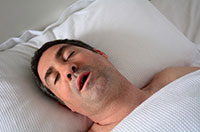 Sleep apnea is a disorder in which breathing repeatedly starts and stops during sleep. Snoring loudly is a common symptom, but it's not the only sign – and snoring doesn't necessarily indicate sleep apnea. Dentists tend to be the first doctors to identify a sleep apnea problem in their patients, since people tend to visit dentists more frequently than physicians.
Sleep apnea is a disorder in which breathing repeatedly starts and stops during sleep. Snoring loudly is a common symptom, but it's not the only sign – and snoring doesn't necessarily indicate sleep apnea. Dentists tend to be the first doctors to identify a sleep apnea problem in their patients, since people tend to visit dentists more frequently than physicians. There’s nothing like a little Chicago crosstown rivalry to get the blood boiling. While we’ll leave the big game analysis up to the professional players, we’re here to compare the teams in a new, but equally important way: by their mascot’s teeth. After all, who wants to follow a team that represents bad dental health?
There’s nothing like a little Chicago crosstown rivalry to get the blood boiling. While we’ll leave the big game analysis up to the professional players, we’re here to compare the teams in a new, but equally important way: by their mascot’s teeth. After all, who wants to follow a team that represents bad dental health? As the last teeth to emerge into the mouth, wisdom teeth can be the source of a lot of problems. Because they typically don't develop until ages 17-24, they may not have enough room to grow in, causing painful impaction of the teeth. This means that these four wisdom teeth may only partially come through into the mouth, or in some cases, not at all.
As the last teeth to emerge into the mouth, wisdom teeth can be the source of a lot of problems. Because they typically don't develop until ages 17-24, they may not have enough room to grow in, causing painful impaction of the teeth. This means that these four wisdom teeth may only partially come through into the mouth, or in some cases, not at all. Seeing your gums change from their natural color can be pretty scary. One day you may see healthy pink gums in the mirror, and the next you might notice an ominous purple or brown tint creeping over them. Brown gums or gum darkening could be completely natural based on your ethnicity or aging. But if your gums are suddenly turning purple or brown, it may be a sign that something dangerous is happening inside your mouth that requires professional attention.
Seeing your gums change from their natural color can be pretty scary. One day you may see healthy pink gums in the mirror, and the next you might notice an ominous purple or brown tint creeping over them. Brown gums or gum darkening could be completely natural based on your ethnicity or aging. But if your gums are suddenly turning purple or brown, it may be a sign that something dangerous is happening inside your mouth that requires professional attention. Before and After Gum Disease Treatment Therapy[/caption]
Before and After Gum Disease Treatment Therapy[/caption] You might consider brushing and flossing your teeth everyday a pain. But it’s definitely not as painful as it used to be. Throughout history, humans have experimented with a variety of different tools and ingredients to clean their teeth, including bones and oyster shells. The toothbrushes, toothpastes and floss we use today were created relatively recently.
You might consider brushing and flossing your teeth everyday a pain. But it’s definitely not as painful as it used to be. Throughout history, humans have experimented with a variety of different tools and ingredients to clean their teeth, including bones and oyster shells. The toothbrushes, toothpastes and floss we use today were created relatively recently. Gum disease is no joke. Not only can it be hard to detect if you don’t know what to look for, but gum disease can also cause serious problems down the road. Don’t think you have it? Well,
Gum disease is no joke. Not only can it be hard to detect if you don’t know what to look for, but gum disease can also cause serious problems down the road. Don’t think you have it? Well,  Before Gum Disease Treatment Therapy[/caption]
Before Gum Disease Treatment Therapy[/caption] After Gum Disease Treatment Therapy[/caption]
After Gum Disease Treatment Therapy[/caption] All the way back in 1772, chemist Joseph Priestley created laughing gas, otherwise known as nitrous oxide. It was soon discovered the gas could relieve pain. But it was not a strong enough sedation to keep people feeling good through major surgeries. That’s why it’s the perfect choice for minor dental treatments and people who have dentist anxiety.
All the way back in 1772, chemist Joseph Priestley created laughing gas, otherwise known as nitrous oxide. It was soon discovered the gas could relieve pain. But it was not a strong enough sedation to keep people feeling good through major surgeries. That’s why it’s the perfect choice for minor dental treatments and people who have dentist anxiety. Spring is a beautiful time of year, especially in Chicago. We boast some of the best temperatures during this time, perfect for visiting Millennium Park or heading to Wrigley Field. When the sun comes out during these glorious days, you will more often than not find yourself applying sunscreen to avoid those nasty burns. The sun is something that warms us to our core, yet too much of it can be dangerous to our skin.
Spring is a beautiful time of year, especially in Chicago. We boast some of the best temperatures during this time, perfect for visiting Millennium Park or heading to Wrigley Field. When the sun comes out during these glorious days, you will more often than not find yourself applying sunscreen to avoid those nasty burns. The sun is something that warms us to our core, yet too much of it can be dangerous to our skin. Finding a strange change in your mouth can be scary. You might not know why a mark has appeared, how long it will be there, or what it is. Since it could be a variety of different things, ranging from harmless to more serious, it’s important to visit a dentist or doctor when you find an unfamiliar sore or spot in your mouth.
Finding a strange change in your mouth can be scary. You might not know why a mark has appeared, how long it will be there, or what it is. Since it could be a variety of different things, ranging from harmless to more serious, it’s important to visit a dentist or doctor when you find an unfamiliar sore or spot in your mouth. It’s easy to think of teeth simply as a tool for chewing food. But they do a lot more than that. Truth is,
It’s easy to think of teeth simply as a tool for chewing food. But they do a lot more than that. Truth is,  You might be surprised that a dental office is writing about eating disorders. But eating disorders like bulimia and anorexia nervosa can devastate your teeth, gums and overall oral health.
You might be surprised that a dental office is writing about eating disorders. But eating disorders like bulimia and anorexia nervosa can devastate your teeth, gums and overall oral health.  From teeth erosion revealing a little girl’s possession to shiny and strong pearly whites indicating fierce power, teeth play a surprisingly important role in many scary movies. With Halloween quickly approaching, we thought we’d document the scariest chompers from horror movies to set the mood for the most haunted night of them all. You might want to turn on the lights for this one.
From teeth erosion revealing a little girl’s possession to shiny and strong pearly whites indicating fierce power, teeth play a surprisingly important role in many scary movies. With Halloween quickly approaching, we thought we’d document the scariest chompers from horror movies to set the mood for the most haunted night of them all. You might want to turn on the lights for this one.




 If your dentist asks to collect a sample of your saliva, try not to be too weirded out. It’s actually very common for dentists to perform saliva tests. Saliva tests are extremely easy procedures that require almost nothing from you other than a little bit of your spit. Best of all, these simple tests can save you from developing severe dental issues in the future.
If your dentist asks to collect a sample of your saliva, try not to be too weirded out. It’s actually very common for dentists to perform saliva tests. Saliva tests are extremely easy procedures that require almost nothing from you other than a little bit of your spit. Best of all, these simple tests can save you from developing severe dental issues in the future. From putting on caps to placing dental veneers, dentists do a lot of interesting things to keep your teeth in tip-top shape. If you live your daily life outside of the dental world, you might find all of the stuff we do to be a bit confusing. We’re here to break down some of the most popular cosmetic dental treatments we offer at Water Tower Dental Care to help you better understand which procedures can best help your smile. Here’s the difference between caps, crowns, veneers, onlays, inlays and fillings.
From putting on caps to placing dental veneers, dentists do a lot of interesting things to keep your teeth in tip-top shape. If you live your daily life outside of the dental world, you might find all of the stuff we do to be a bit confusing. We’re here to break down some of the most popular cosmetic dental treatments we offer at Water Tower Dental Care to help you better understand which procedures can best help your smile. Here’s the difference between caps, crowns, veneers, onlays, inlays and fillings. With long sunny days outdoors and exotic vacations, ‘tis the season for love. And with love comes lots of smooching! When you’re in the moment with your loved one, we’re guessing that you aren’t thinking about how your kisses are affecting your mouth. Interestingly though, kisses really do impact your oral health, both positively and negatively. Our experts are here to tell you how exactly kissing does this with juicy detail. We’ll start with the bad news first.
With long sunny days outdoors and exotic vacations, ‘tis the season for love. And with love comes lots of smooching! When you’re in the moment with your loved one, we’re guessing that you aren’t thinking about how your kisses are affecting your mouth. Interestingly though, kisses really do impact your oral health, both positively and negatively. Our experts are here to tell you how exactly kissing does this with juicy detail. We’ll start with the bad news first. Sparkling white smiles are impressive - There’s no doubt about it. White teeth exude confidence, youth and healthiness, which is why so many people get their teeth whitened. But as the teeth whitening trend has picked up more and more steam, it’s important to ask yourself about the safety of teeth whitening treatments.
Sparkling white smiles are impressive - There’s no doubt about it. White teeth exude confidence, youth and healthiness, which is why so many people get their teeth whitened. But as the teeth whitening trend has picked up more and more steam, it’s important to ask yourself about the safety of teeth whitening treatments.
 It’s hard to see your baby in pain while they’re teething. There’s no doubt about it. Parents are always looking for new ways to help their children feel better while their first set of teeth is growing in. To help give their babies an alternative teething relief, many parents have started using Amber Teething Necklaces.
It’s hard to see your baby in pain while they’re teething. There’s no doubt about it. Parents are always looking for new ways to help their children feel better while their first set of teeth is growing in. To help give their babies an alternative teething relief, many parents have started using Amber Teething Necklaces. Just as you might expect, as the rest of your body ages, your teeth age as well. So what exactly happens to your teeth as they get older and what can you do now to help them out?
Just as you might expect, as the rest of your body ages, your teeth age as well. So what exactly happens to your teeth as they get older and what can you do now to help them out? Many people are reluctant to floss, for one reason or another. However one convinces themselves, the reasons one avoids flossing is probably wrong. There are many myths about flossing that can easily be busted with a simple explanation. These are nine myths that tend to keep people from flossing, but should stop no one.
Many people are reluctant to floss, for one reason or another. However one convinces themselves, the reasons one avoids flossing is probably wrong. There are many myths about flossing that can easily be busted with a simple explanation. These are nine myths that tend to keep people from flossing, but should stop no one. It’s a surprise at how little many people think about their teeth until a true problem arises. Teeth are often ignored and given little care until it’s too late. The best thing a person can do for their teeth is to educate themselves on the proper care as well as their simple structure. Many people don’t even realize they have several different types of teeth. Today, we’d like to help our readers by listing the different types of teeth and how they help you every day.
It’s a surprise at how little many people think about their teeth until a true problem arises. Teeth are often ignored and given little care until it’s too late. The best thing a person can do for their teeth is to educate themselves on the proper care as well as their simple structure. Many people don’t even realize they have several different types of teeth. Today, we’d like to help our readers by listing the different types of teeth and how they help you every day.

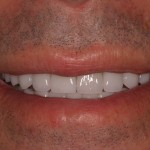
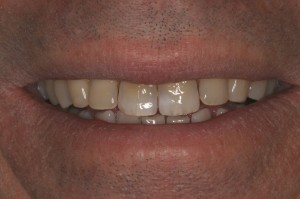
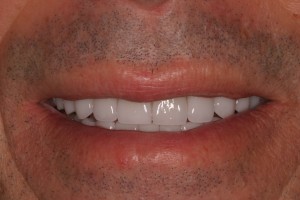

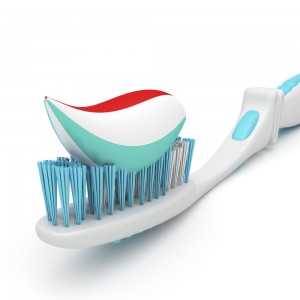 Consider this: most people wear a new outfit every single day. We put on a clean shirt and a clean pair of pants to look presentable and respectable. If we were to spill coffee or some pasta sauce on our shirt, we wouldn't continue wearing that same shirt for three more days or probably even a day. So why would we treat our teeth any differently? We wear them everyday, with every outfit. Shouldn't they be as clean and respectable as the clothes we wear? Of course, pasta sauce and
Consider this: most people wear a new outfit every single day. We put on a clean shirt and a clean pair of pants to look presentable and respectable. If we were to spill coffee or some pasta sauce on our shirt, we wouldn't continue wearing that same shirt for three more days or probably even a day. So why would we treat our teeth any differently? We wear them everyday, with every outfit. Shouldn't they be as clean and respectable as the clothes we wear? Of course, pasta sauce and  While toothpastes and mouthwashes can help whiten teeth, they often are minimally effective. For better results in the privacy of your own home, an over the counter, take-home teeth whitening kit can be more effective.
While toothpastes and mouthwashes can help whiten teeth, they often are minimally effective. For better results in the privacy of your own home, an over the counter, take-home teeth whitening kit can be more effective.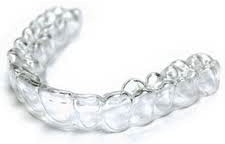 On average, we recommend the trays be used for one hour a day for a total of two weeks. At that time, a follow-up appointment is made to show you the change of shade and to recommend if you should continue the treatment or only refer to touch-up applications thereafter.
On average, we recommend the trays be used for one hour a day for a total of two weeks. At that time, a follow-up appointment is made to show you the change of shade and to recommend if you should continue the treatment or only refer to touch-up applications thereafter.





 Website Powered by Sesame 24-7™
Website Powered by Sesame 24-7™